
SHB111
-
Posts
30 -
Joined
-
Last visited
Content Type
Forums
Detector Prospector Home
Detector Database
Downloads
Posts posted by SHB111
-
-
15 hours ago, GB_Amateur said:
There was a thread here the last couple weeks about choice of scales. My approach is to get an affordable set of scales and an affordable set of calibration weights. The latter don't lie and will tell you when your scale is doing so. 😁 But if that's the case, I can make a calibration curve in the worst case that translates a reading to an actuaI reliable value.
I have four scales -- one a hanging scale (for multi-kilogram range) and three smaller, each one covering a least significant digit range (one, two, and three decimal place) for the gram scale. As far as top end (max weight before overflow), I try to find one with the largest capacity which still fits my number of gram decimal place requirement. My total investment for four scales and calibration weights is under $100. I bought them over 5 years ago and all still work and are accurate.
Gotta figure out what this is in this thumb scraper now. See attached.
-
Sounds like a good plan, hate needing a tool/equip and having to wait on it, may as well buy a setup like that and be prepared. Appreciate the info.
Since testing kits for gold/silver/platinum are inexpensive, and so are diamond testers, might as well grab that as well. Maybe a spectrometer too, few hundred bucks possibly well spent. -
1 hour ago, SHB111 said:
Graduated cylinder
I can see this hobby taking up a lot of my time, lol.
But I’m game. Any certain equipment specifications I should be aware of - type/brand scale, etc or anything else I should get to mitigate error as much as humanly possible?
-
8 minutes ago, GB_Amateur said:
Exactly how did you measure the specimen's volume?
Graduated cylinder
filled it with water to a depth taller than the spearhead. Took a reading. Dropped the spearhead in. Took another reading. Did subtraction.
then to double check myself I weighed the difference in volume on a scale. Since 1 gram of water displaces 1 cubic centimeter of volume I figured it was a good way to check to make sure I didn’t read wrong.
-
-
-
On 4/10/2022 at 1:46 AM, Jeff McClendon said:
SHB111,
you have been a very amiable topic starter and your enthusiasm, willingness to do testing and to listen to the those that have commented with open ears is very commendable. I concur with olddog46. The arrow and spear points look way too fresh, uniform in shape and size and are made from more "pretty" forms of agate and chalcedony than most North American authentic points found in the wild. That does not take away from their beauty.
Well since my spearhead turned out to be a reproduction, it kinda seems case closed, right?
However there’s still something that’s bothering me. See calculations:
Displacement of specimen = 25.44cc or 25.44 grams of water
Dry Weight of specimen = 77.77g
Dry weight of specimen divided by volumetric displacement of specimen equals density of specimen
77.77/25.44 = Density of specimen = 3.06
^^^^^THIS^^^^^
The SG of chert is 2.6The SG of the specimen is 3.06
This indicates within the specimen is something with a much higher density than chert - something equivalent to 11 grams of gold. Calculations continued below:
Avg. Density of chert per reference guide = 2.6
3.06 > 2.6 - higher density of specimen indicates specimen contains heavy minerals - such as gold if visible indication and other non-destructive testing measures are positive.
How to calculate gold weight:
Density x Displacement Volume of specimen (chert) = weight of chert in specimen in grams (g)
2.6x25.44cc = 66.14
So a chunk of pure red chert that displaces 25.44 cc (or grams) of water should weigh 66.14 grams.
Dry weight of specimen minus weight of RS calculated for specimen = potential gold weight contained within specimen:
77.77g - 66.14g = 11.63g gold
1g gold = $61.79
Potential Gold Content Value: 11.63g x $61.79/g = $718.62
i wrote the little “go-by” myself so I could have an error or made an erroneous assumption but I think that’s correct.
Thoughts?
-
6 hours ago, Jeff McClendon said:
SHB111,
you have been a very amiable topic starter and your enthusiasm, willingness to do testing and to listen to the those that have commented with open ears is very commendable. I concur with olddog46. The arrow and spear points look way too fresh, uniform in shape and size and are made from more "pretty" forms of agate and chalcedony than most North American authentic points found in the wild. That does not take away from their beauty.
Thank you Jeff, I came here to learn from you guys, not teach. Real or not the points did get me thinking and stirred up some old interests that had kinda gotten buried over the years - I’m ready to get out and hunt some rocks!
I’ve gotten into drones and thinking now how that’s great tech to employ. Plus the testing is fun too, im a lab work and experiment geek by nature so that part fits my personality perfectly.
I appreciate everyone’s input and willingness to help and to encourage.
-
Well, at least the reproductions are technically authentic - since they’re made in India by Indians.
-
-
Well damn. Lol. That’s exactly right. I lied, there were only 3 found arrowheads in the batch of 10. My hat off to you sir.
-
-
27 minutes ago, olddog46 said:
Those arrowheads are modern reproductions. Usually made in India and can be found on Ebay and for sale in tourist shops. If you want other opinions check out arrowheads.com. You can post them and get replies there.
Interesting. Which ones are reproductions?
if I take a pic of 10 points - 5 I found in the field at the hunting club and 5 I picked up from a collection, can you tell me which 5 I found and which 5 I bought?
-
But I agree with a spectrometry test. Be the next step
-
It’s not dust, it smeared like a thin sheet, to me indicating malleability.
-
Now there’s gold on my cell phone screen and all over the blunt end of that pick. Feel pretty confident since it smeared it’s indeed gold.
-
-
2 minutes ago, Gold Seeker said:
The little piece that fell out with the pick, take a hammer to it and see if it flattens out and expands or if it crushes into dust, if it flattens out it's malleable and very well could be gold, I think it's time to do a spectrograph analysis of the piece.
I crushed and rubbed with the blunt end of a pick. See photo results
no dust- just smeared yellow stuff
-
And thanks to everyone for all the advice, suggestions, and useful info. I’ve initiated contact with my local university, museum and geology department. I took geology (1 course) as part of my engineering degree, I’m civil, from UAB if there are any alumni in here speak up! Lol.
but I’m waiting to hear back from those folks before anything else. If this turns out to be hugely significant and should be part of a museum collection I’ll make sure that’s where it ends up.
-
13 hours ago, Gold Seeker said:
If what I'm seeing is gold some of the specks seems big enough to test using a needle, gold is malleable meaning it can be hammered, pressed, easily indented and or scratched without cracking, such as one can do with a piece of lead, take a needle and try to poke a piece/speck of the "gold" if it indents and doesn't chip/crack etc. it's very possible that it's gold.
If it passes the needle test I would next take it to a jeweler or some pawn shops and have them test it with a spectrometer.
Passes the needle test. Photo doesn’t show that but I pressed the flake in second photo proximal to the tip of point. It sunk in there and I felt some resistance, almost tackiness, like it was gummy, pulling the pick out. On the other hand when I press again anywhere else I don’t see gold I get zero penetration.
Also, I rubbed the gold in a couple spots with the pick where it just looked “yellow” to reveal a fine brand new gold shine beneath. And accidentally flaked a piece off as seen in the 3rd photo.
-
If it does turn out to be gold, here’s the calculations I used to determine the approximate gold content:
Displacement of specimen = 25.44cc or 25.44 grams of water
Dry Weight of specimen = 77.77g
Dry weight of specimen divided by volumetric displacement of specimen equals density of specimen
77.77/25.44 = Density of specimen = 3.06
Avg. Density of chert per reference guide = 2.6
3.06 > 2.6 - higher density of specimen indicates specimen contains heavy minerals - such as gold if visible indication and other non-destructive testing measures are positive.
How to calculate gold weight:
Density x Displacement Volume of specimen (chert) = weight of chert in specimen in grams (g)
2.6x25.44cc = 66.14
So a chunk of pure red chert that displaces 25.44 cc (or grams) of water should weigh 66.14 grams.
Dry weight of specimen minus weight of RS calculated for specimen = potential gold weight contained within specimen:
77.77g - 66.14g = 11.63g gold
1g gold = $61.79
Potential Gold Content Value: 11.63g x $61.79/g = $718.62
-
2 hours ago, Joe D. said:
Beautiful collection, regardless of any gold content or authenticity! The only way to tell, for your own information, is museum identification!
Beyond that, displaying them is the real treasure! Real or reproductions, they show the same!!👍👍
Have you ever been through the process of museum identification?
-
-
1 hour ago, JCR said:
I certainly do not know, but I would not think a sedimentary rock like Sandstone could be knapped by pressure flakes. I have only ever seen igneous rocks like Chert/Flint or Obsidian used for knapping.
I’m pretty sure chert is correct vs my initial red sandstone statement. Glad I came here, learning already.

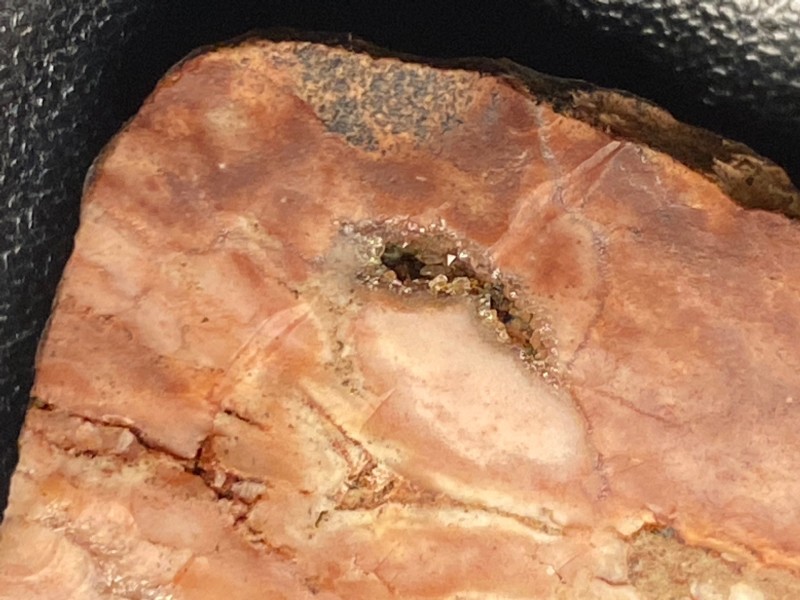
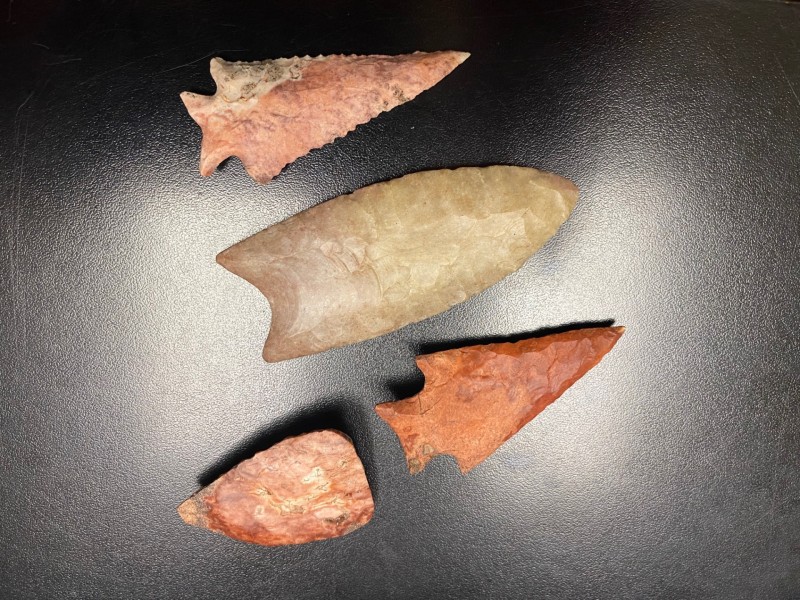
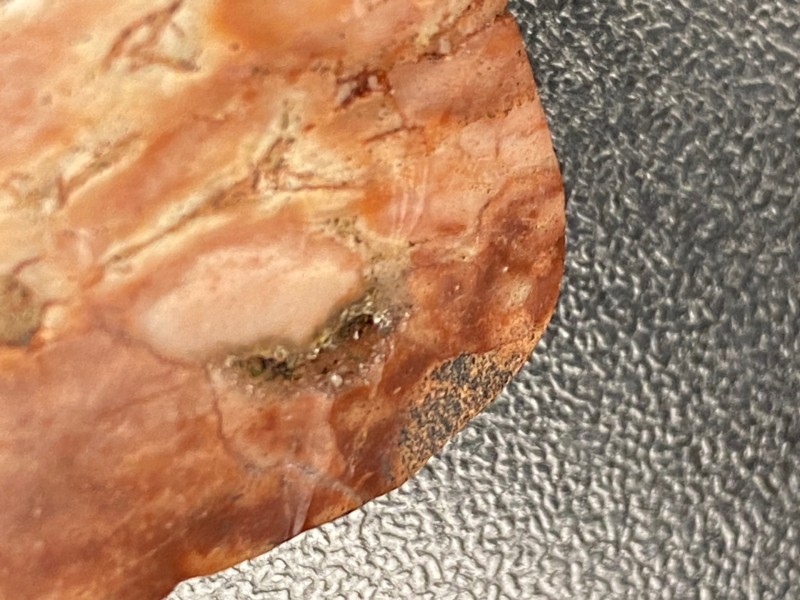
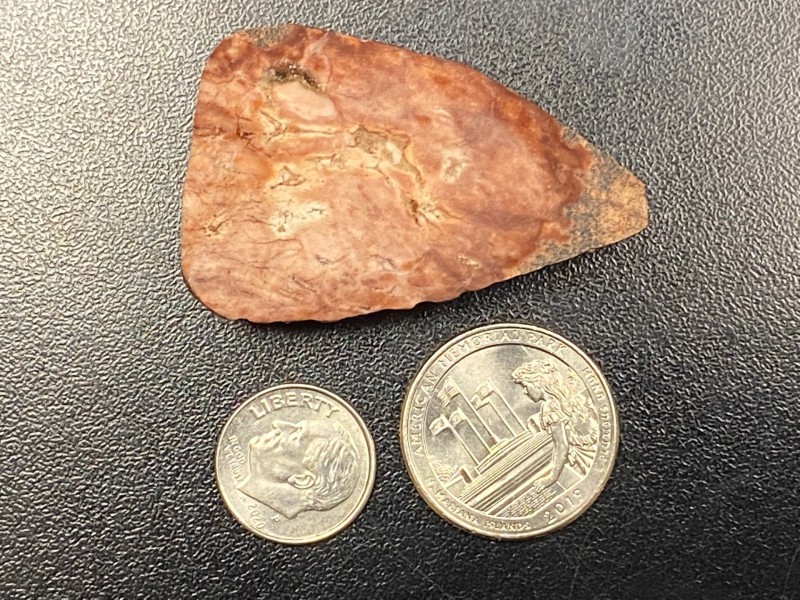
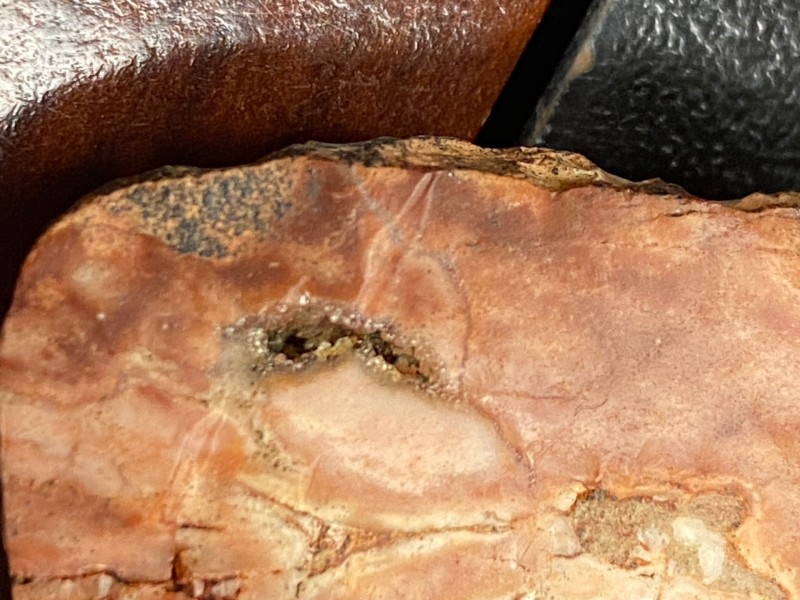
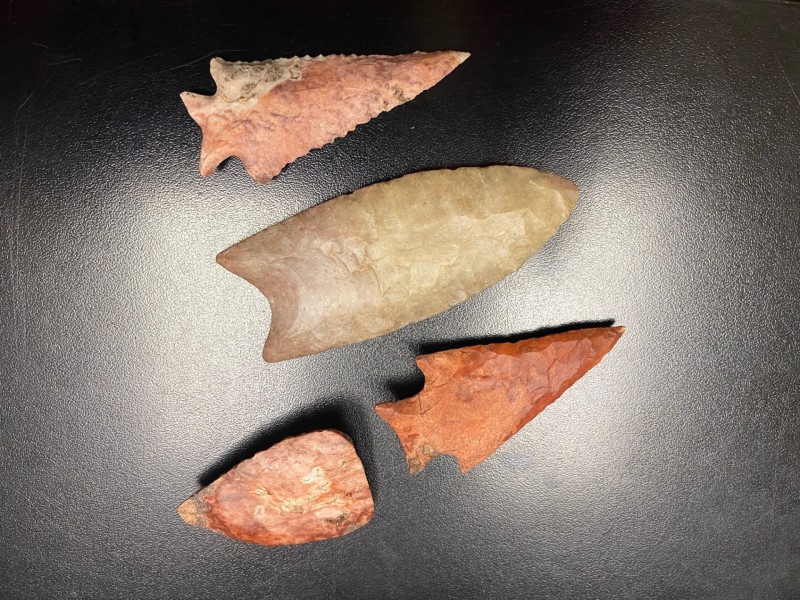
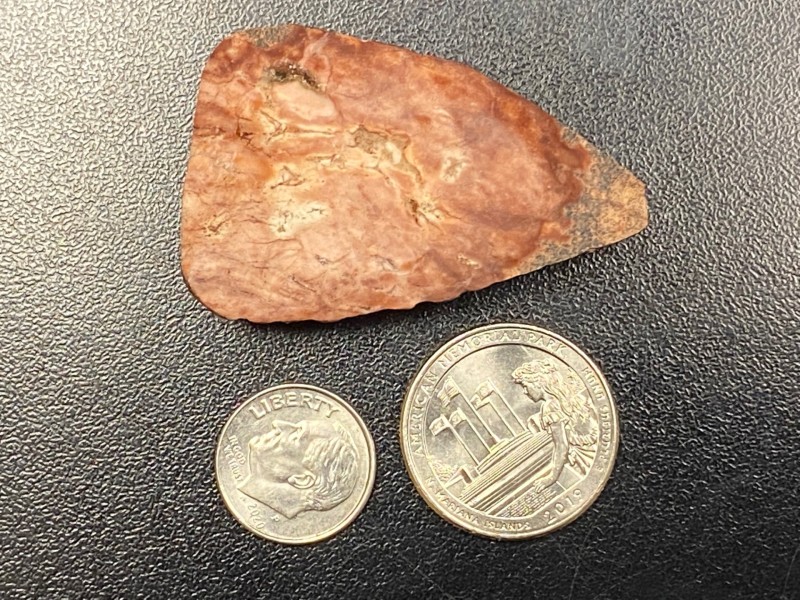
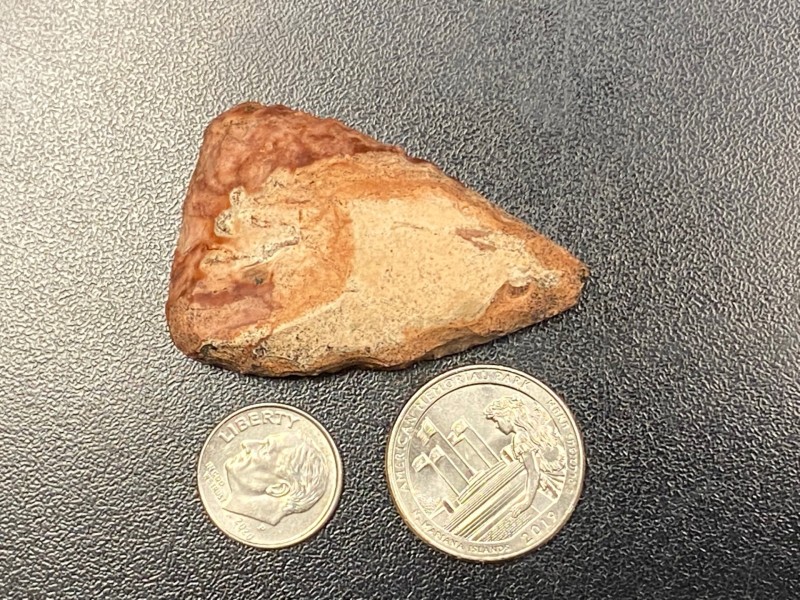
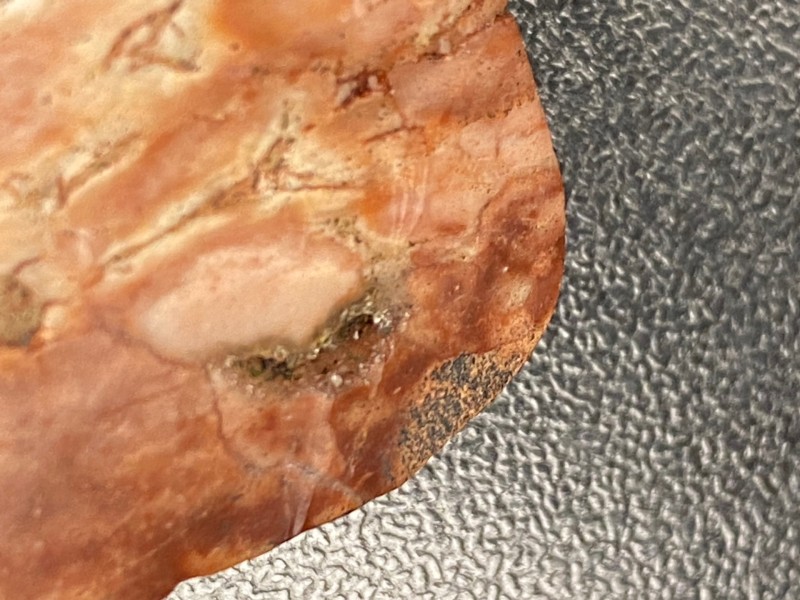
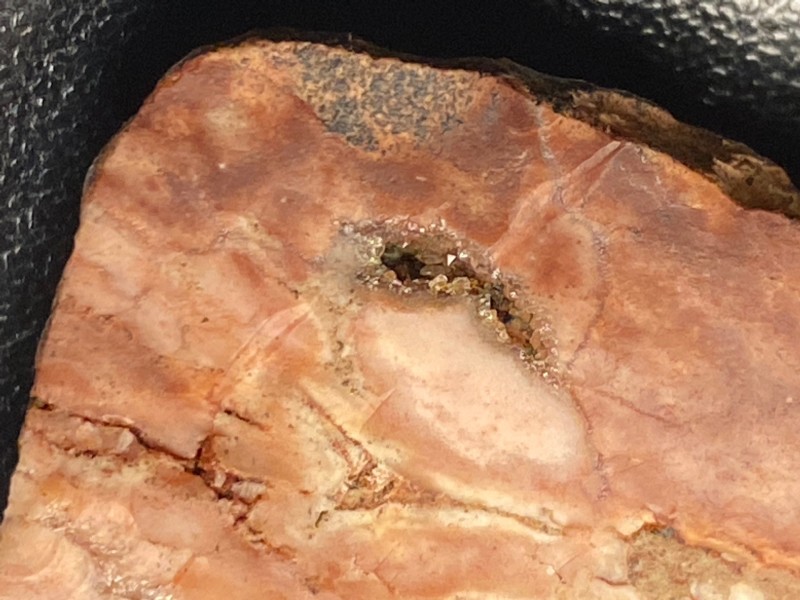
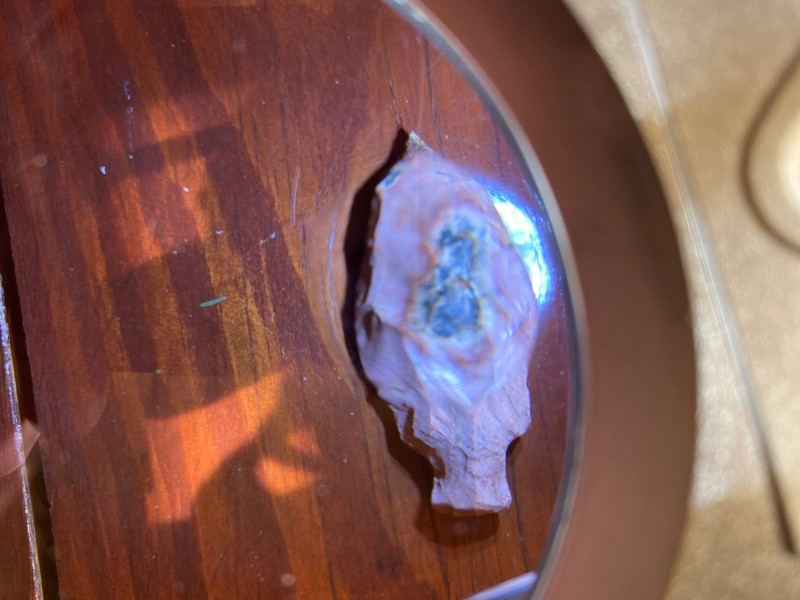
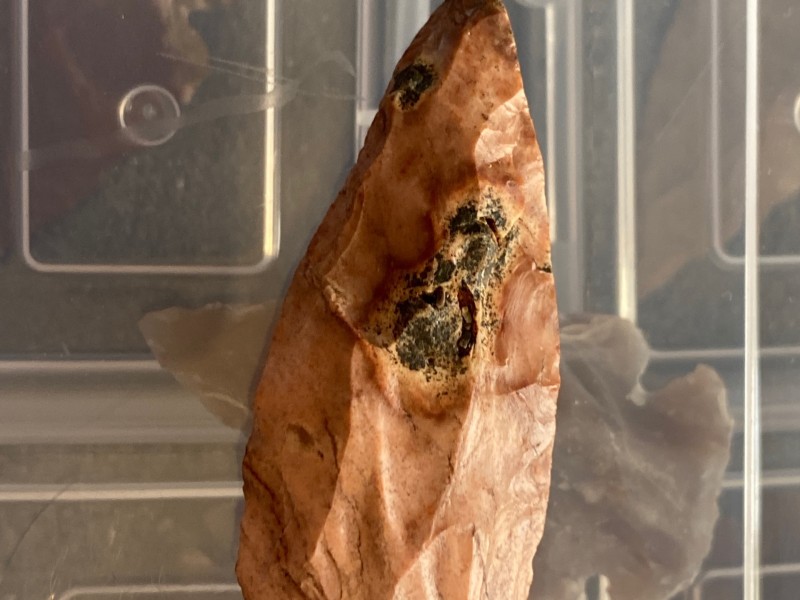
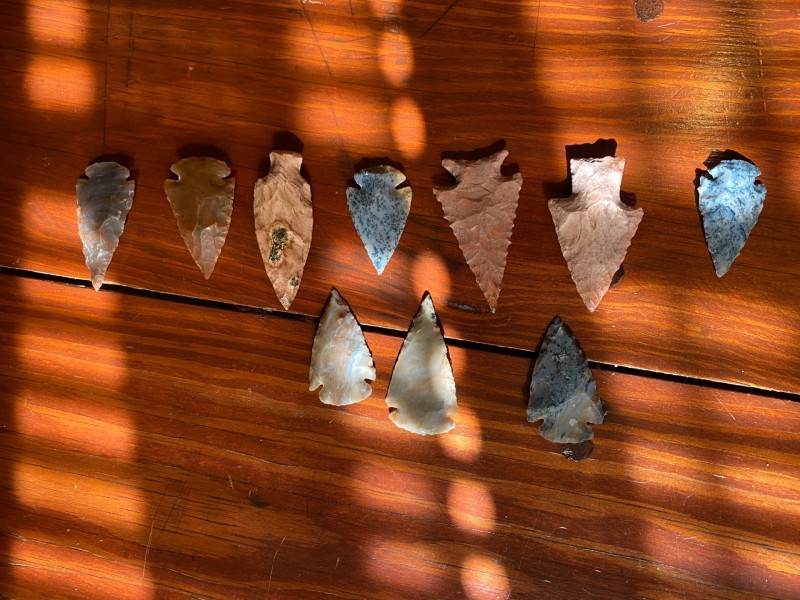
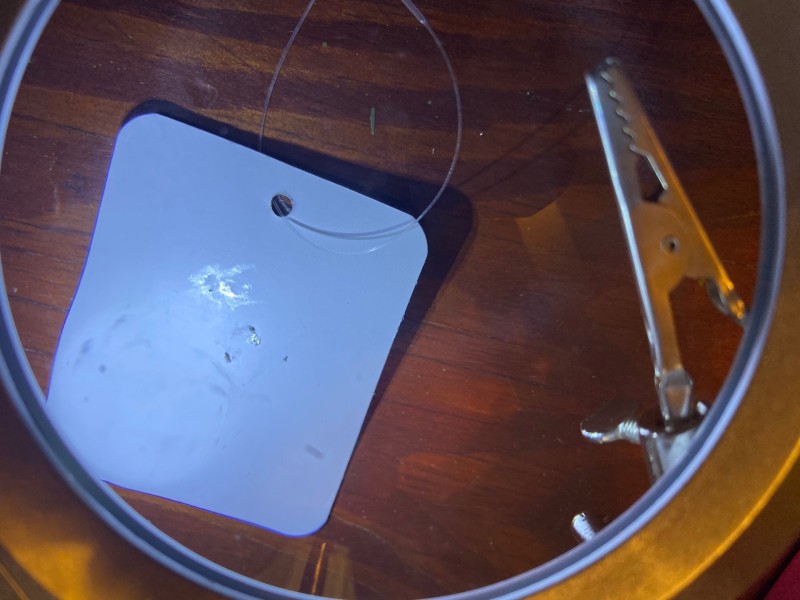
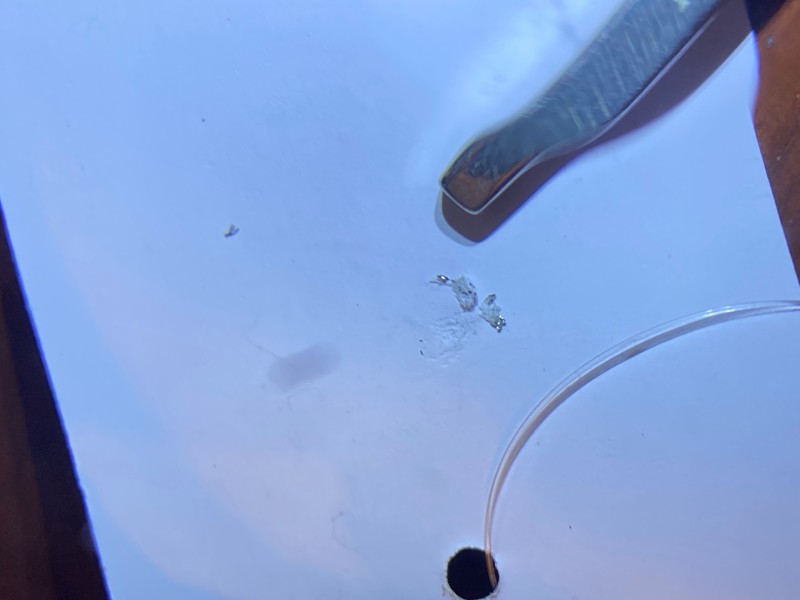
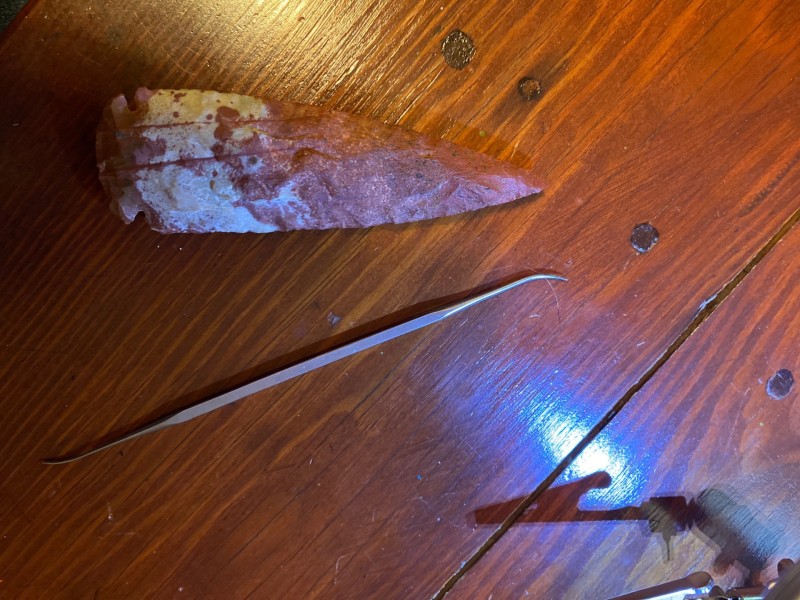
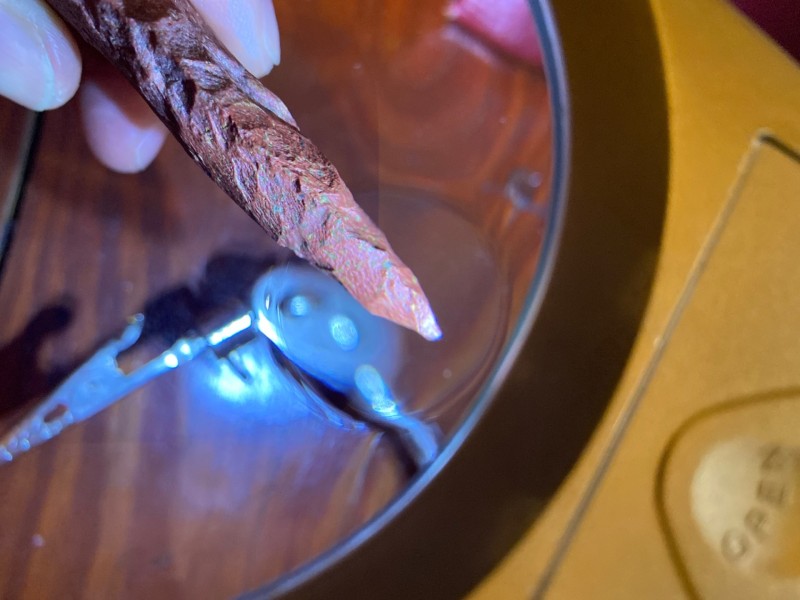
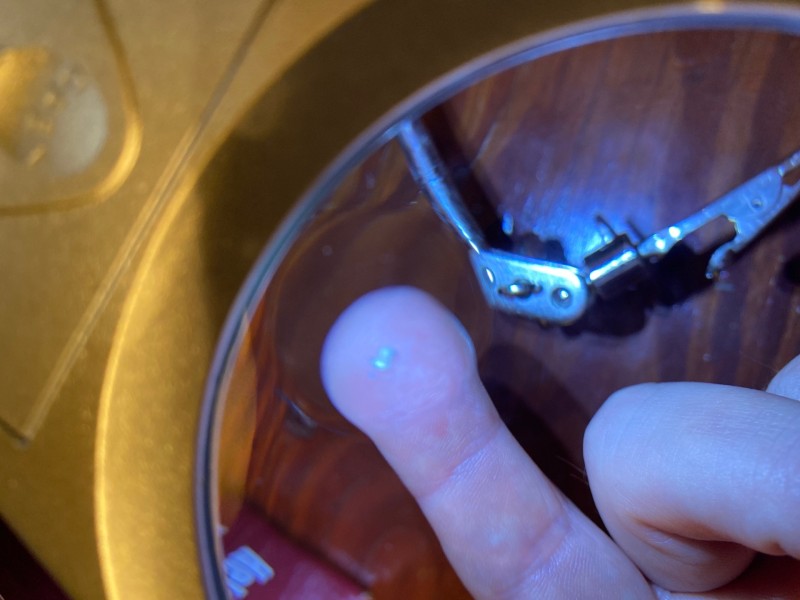
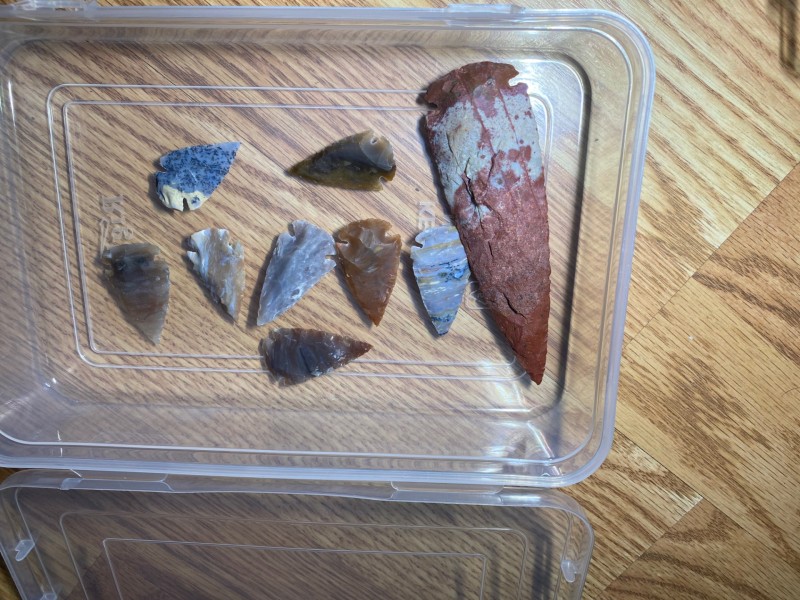
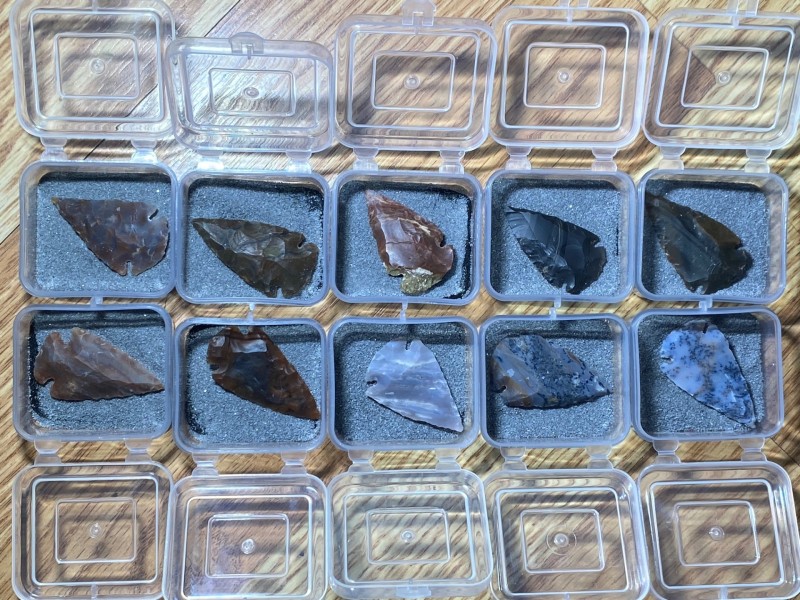
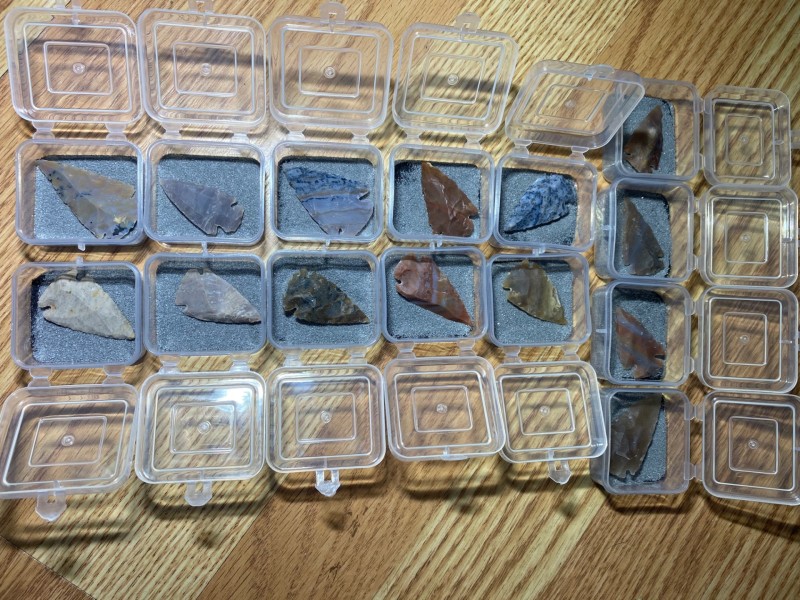
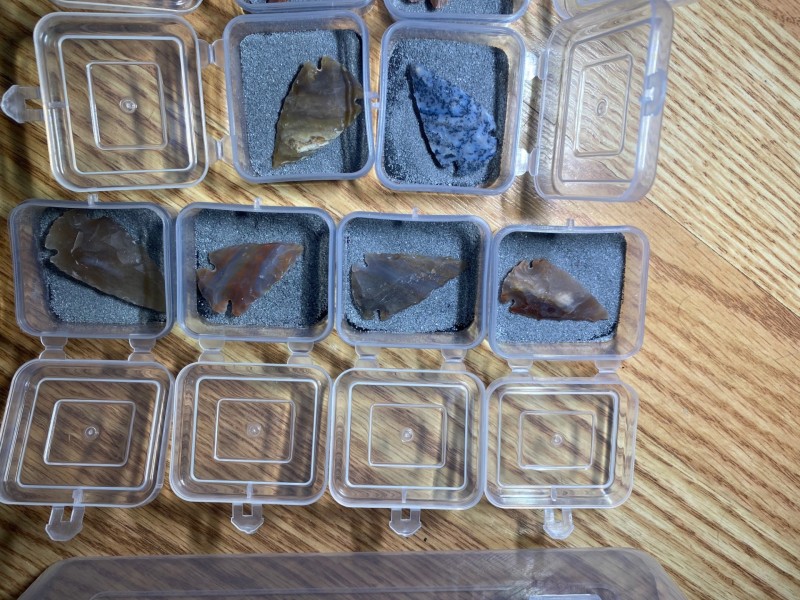
Spearhead (red Sandstone) With Gold Inside?
in Rocks, Minerals, Gems & Geology
Posted
Nice. All kinds of nice surprises. Multi-layered entertainment.